English Bulldog
English Bulldog Info and Care
The English Bulldog is a loving, gentle family companion with an adornment for children!
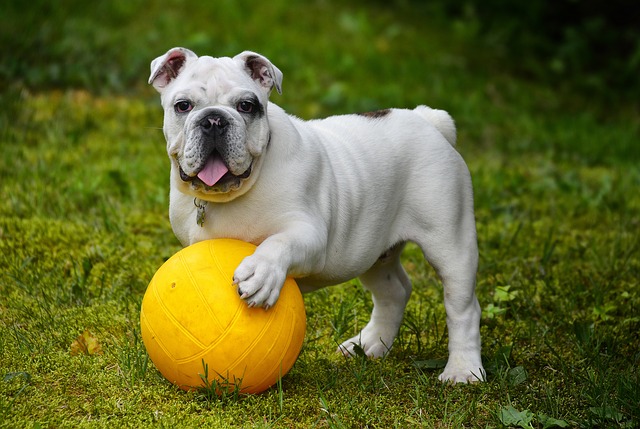
These pups are one of the best small to medium sized canines for families and apartment dwellers.
They are also affectionate towards strangers. English Bulldogs are categorized as companion dogs, and that is certainly their specialty.
They typically stand a little over a foot tall when they are fully grown, and they should weigh no more than 50 pounds.
If their owner provides proper care, he should live up to 12 years old or more. Overall; the English Bulldog is a slobbering playmate and downright wonderful pooch!
History of the English Bulldog
The ancestors of the English Bulldog were mastiff-like dogs.

The breed was developed in England with the intention of using them in a blood sport known as bull baiting.
Bull baiting dogs would grab hold of the Bull’s nose and shake it roughly.
This blood sport was very popular in those days and many of the canines that would participate met their fate on the field.
England in these days had little to do in the forms of public entertainment. Television, movies and video games had not yet been invented.
While bull baiting was considered a blood sport, it was also thought to tenderize the meat of the bull.
Many of the bulls that were to be slaughtered would be baited by a canine beforehand with the intent of making the flesh more tender.
Bulldogs during this time had a slightly different appearance.

They were taller than they are today, and heavier, too.
Their mouths and jaws were broad and powerful which made the dog difficult to shake off once he was latched to the bull’s nose.
English Bulldogs back then also had a high tolerance for pain which also made them good candidates for the sport.
English Bulldogs during this time would later be known as the Old English Bulldog. The genetics of this breed have since been classified as extinct.
After many years of this terrible form of entertainment, and countless dogs that lost their lives during it, bull baiting was banned in 1835.
The English Bulldog was then “reinvented” to be less aggressive, and more affectionate.
He became a loving family companion rather than a blood sport participant. The reinvented English Bulldog was entered into England’s dog shows in 1859.

By the year 1875, there had been two Bulldog breed clubs. The first of which began in 1864 and ended three years later.
The second club for the breed formed in 1875 and still exists today!
The breed was eventually brought to the United States and was shown in the year 1880.
The English Bulldog was accepted as a member of the American Kennel Club in 1886, and the Bulldog Club of America was created in 1890.
The Bulldog’s standards were often debated and revised until the final revision was accepted in 1896 (which is the same breed standard we know today).
Personality and Temperament of the English Bulldog
The English Bulldogs that we know and love today are sweet, sociable canines with extraordinary courage as well!

They make wonderful watchdogs as they strive to protect those they love from harm. However, English Bulldogs are also known to be lovers, not fighters.
They are not likely to start a fight with another living being, however, if there is danger afoot then he will surely stand his ground.
English Bulldogs are also rather stubborn and slow learners and may make training sessions challenging. However, he is not likely to forget a lesson once it has been instilled in him.
English Bulldog puppies should display curiosity and playfulness.
Their overall temperament will be affected by their genetics, as well as their training and socialization.
A Bulldog puppy should not be afraid of humans and should even be willing to be held by them.
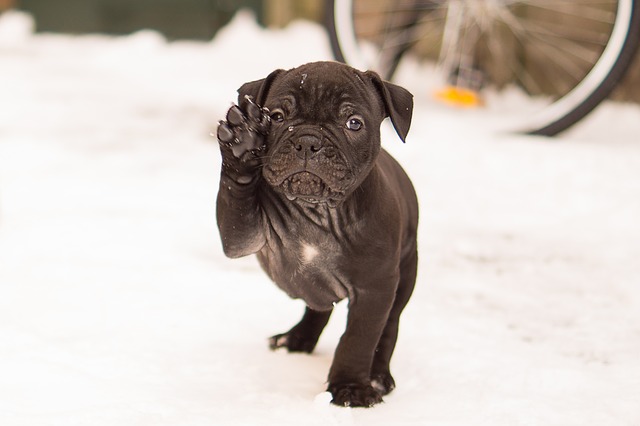
Timid puppies may require more extensive training sessions and more in-depth socialization. However, they could not be avoided for adoption because of it.
Socialization and basic training should begin in puppyhood to ensure that the puppy grows up to be a well-mannered adult English Bulldog.
Caring for the English Bulldog
It is wise to adopt your English Bulldog from a reputable breeder or shelter. These pups are prone to a variety of illnesses that should be documented prior to adoption.
Reputable breeders will be willing to show adopters their medical paperwork on the puppies (or of the parents) to allow the adopters a fair chance of knowing what their puppy may suffer from.
If a breeder is not willing to offer medical paperwork on the puppies or the parents, then they are not a reputable breeder.

Some of the medical conditions to be aware of for English Bulldogs include:
Feeding
English Bulldogs have a tendency to overeat if they are given the opportunity to do so.
Therefore, it is vital that owners do not overfeed or leave out full bowls of food for their pooch to nibble on throughout the day.
English Bulldogs do not nibble their kibble, and instead, he will over-engorge himself and cause himself to become ill or overweight.
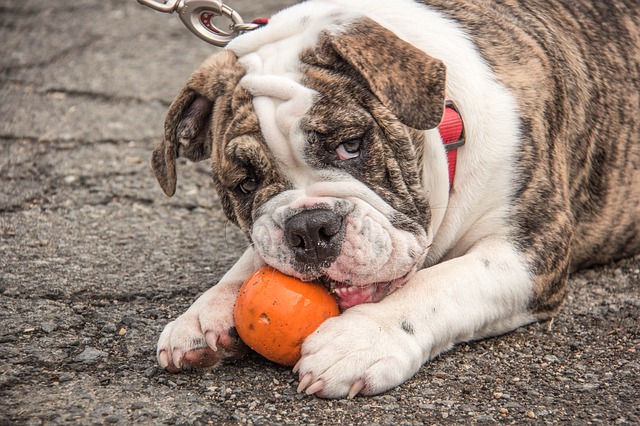
English Bulldogs should eat up to two cups of high-quality dry kibble each day.
These two cups of kibble should be given at two separate feeding times (i.e. one cup of kibble at breakfast and the second cup of kibble at dinner).
Owners of English Bulldogs should also refrain from offering high-calorie treats and table scraps.
Both of these items easily help your pooch pack on the pounds. Instead, choose healthier treat options and provide them during training sessions only.
It would also be wise to avoid giving your English Bulldog table scraps altogether.
His kibble should be formulated to meet his age, size, weight, and activity level requirements.
Every pooch is different, so it is important to pick a kibble that suits your particular English Bulldog.
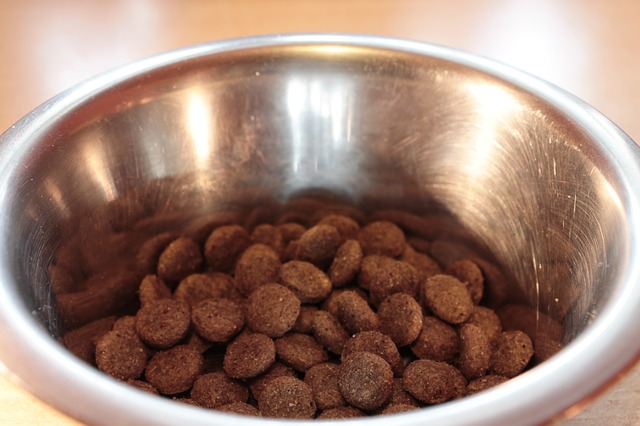
If your English Bulldog gains too much weight and is becoming obese, then his joints will begin to suffer, and he will likely suffer from multiple health conditions including diabetes.
Exercise
While English Bulldogs are friendly and playful creatures, they are not known for being an active dog breed.
In fact, they are very likely to be hesitant about any form of exercise including a walk around the block.
However, that walk around the neighborhood is critical to their overall health as it will help reduce the likelihood of them gaining unwanted weight.
English Bulldogs typically enjoy about 10 to 15 minutes of indoor playtime before they require a nap.
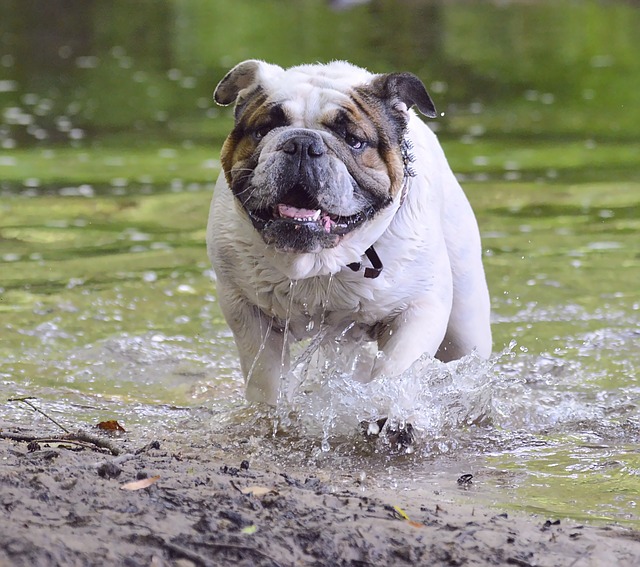
Engaging in playtime (even for short bursts) is also essential to keep their weight under control.
Habitat Requirements
Their low-maintenance exercise needs, size, friendliness, as well as their rare need to bark make them wonderful apartment dwellers.
English Bulldogs are one of the few dog breeds that are better suited for an indoor apartment or condo lifestyle than a single family home.
They have little use for a large home or a private yard because he is satisfied with a short distance walk around the neighborhood and a fire hydrant to relieve himself on.
The English Bulldog should not live in climates of extreme, constant heat or extreme, constant cold temperatures.
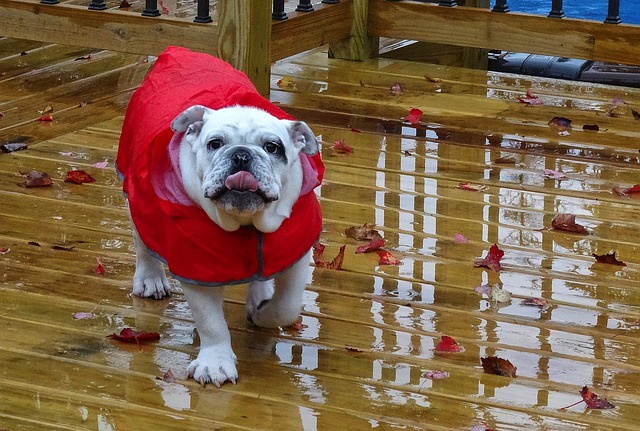
They are simply not suited for either climate and would become rather ill in either case.
English Bulldogs should not be expected to swim in the family pool or at the dog beach because their head size and shortened muzzles make swimming incredibly difficult.
His habitat welcomes children of all ages, and he is likely accepting of other pets in the home as well.
Training and Barking
Training sessions are probably going to be difficult in the beginning.
English Bulldogs are lazy and stubborn, and they are not excited about getting up and moving anywhere.
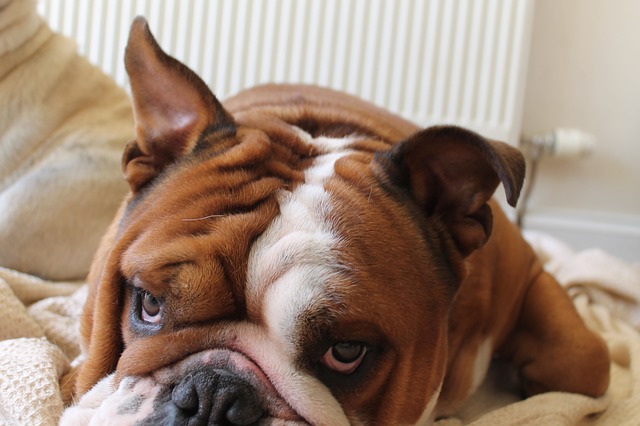
However, he doesn’t easily forget things once he has learned them. Owners should be prepared to use positive reinforcement methods to train their English Bulldog.
They should also consider making each session into a game or fun activity for their pooch.
English Bulldogs are far more likely to pick up on what is being taught to him if it is fun, rewarding and if he is provided praise.
These pups are not big on barking. They typically “woof” a little to alert their owners of a possible intruder or dangerous situation, but otherwise, they are quiet and happy!
Grooming
The English Bulldog’s coat is short, fine, and straight. It should lay smooth against his body.
His skin should be loose and soft (especially around his neck, head, and shoulder areas).
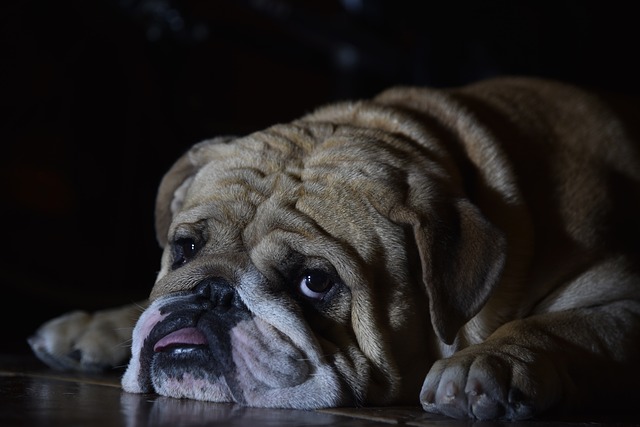
His folds will need to be checked and cleaned regularly to avoid skin irritations. Their coats can come in solid white, red, fallow, fawn, yellow, or yellow red.
They can also come in a variety of brindle combinations or have patches of colors.
Since their coats are short, brushing should only be required about once a week.
His face will need to be wiped with a damp washcloth daily to remove drool and to clean inside his wrinkles.
The wrinkles should not only be cleaned but they should be dried as well to avoid irritation.
If his folds become irritated, ask the veterinarian for a medicated ointment that will help relieve them.
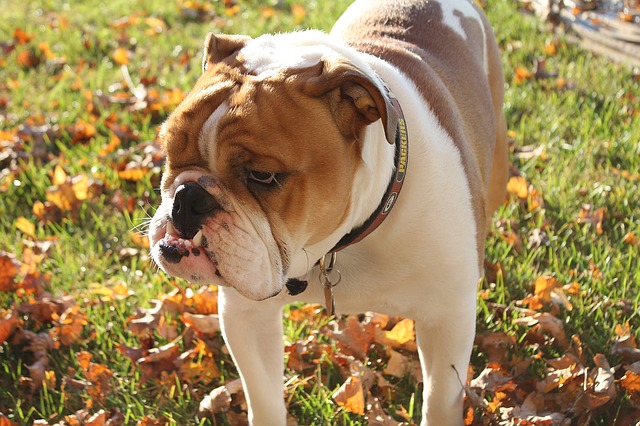
His nose will need to be cleaned, and petroleum jelly should be applied to it afterward.
Owners of English Bulldogs should also take care of his nails (keep them trim), his teeth (keep them brushed), and observe his ears, wrinkles, eyes, mouth, nose, and feet for sores, rashes, infections, irritations, smells and gunk.
